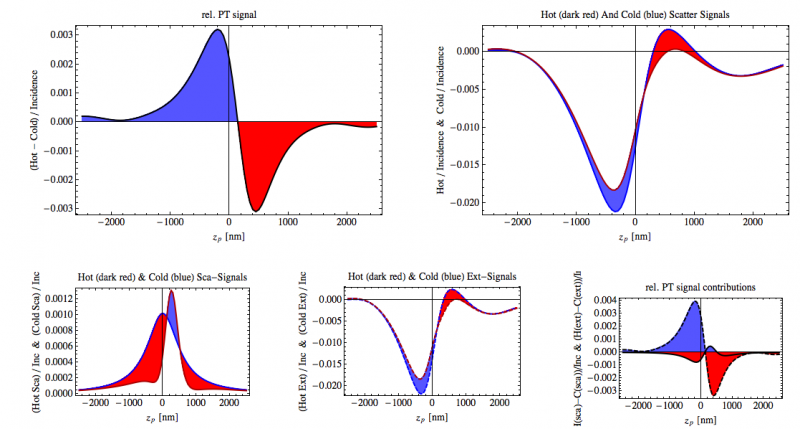These Mathematica script files (M. Selmke) allow the extensive study of light–particle interaction phenomena encountered in coherent focused beam illumination of spherical (multilayered) scatterers, e.g. to compute the intensity collected by a detection microscope objective and recorded with a photo-diode, radiation pressures, the rel. photothermal signal, spectra, Poynting vector flows and near fields among other things. These extensive theory can be found in the supplement of the ACS Nano article “Photothermal Single Particle Microscopy: Detection of a Nano-Lens” and free in the supplement of an early ArXiv-Version. The Gaussian on-axis modeling, which the scripts cover mostly, is also described somewhat more detailed in section 4 of our Optics Express article “Nano-lens Diffraction Around a Single Heated Nano-particle“.
Download: GLMT.zip

The code allows for the individual inspection of the constituting parts of the photothermal signal, i.e. the scatter flux and the interference flux encountered in the artificial total-field decomposition in the generalized Lorenz–Mie theory. The example shows the contributions vs. particle temperature (thermal lens strength) at the axial positions of maximum and minimum PT signal (zp=-250 nm and zp=+450 nm):

The off-axis BSCs allow the calculation of recorded scatter images, i.e. scans of nano-particles (NPs) across the focal region of a focused laser beam from which the transmitted intensity is recorded on a photodiode. Thes exemplary images to the left can be found in the article “Gaussian Beam Photothermal Single Particle Microscopy” in Fig. 4 where they were compared to actual measurements. The ability to compute these images allows for the extraction of the actual NP position inside an optical trap for instance. While for resonant beams (see green image) the dip in the recorded scatter-image closely follows the laser–particle offset, the off-resonant (red image) image shows a dispersive structure with the NP being in the focus halfway in the dispersive structure.

